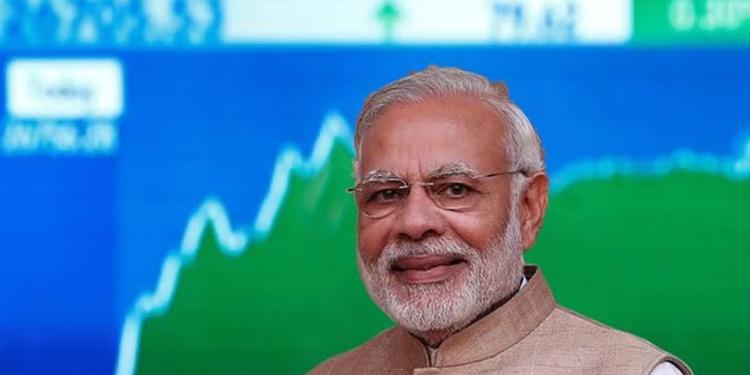The investment by Foreign Portfolio Investors (FPIs) poured in 34,053 crore rupees in the month of March. This is the highest ever monthly inflow in the history of Indian stock markets. Riding on foreign investment, Sensex surged most ever since FY 10. Sensex gained 17.3 percent in FY 19 while Nifty 50 gained 15 percent which is highest ever yearly gain in the history of National Stock Exchange. “FPIs are pouring more and more money in the stocks and take positions in the futures and options market…(this is) the key trigger for the elevated bullish sentiment and comes despite crude oil prices trading on the higher zone in international markets,” said Debabrata Bhattacharjee, Head of Research, CapitalAim. The surge is not only indicative of the high level of confidence in India’s growth story but also scores the point that the growth story will continue under PM Modi’s second tenure.
The performance of the Indian stock market was best among major markets of the world. Other markets in Asia performed very poorly compared to India. South Korean market shed 12.48 percent value in the same time period while China shed 2.47 percent value. The performance of the developed countries’ markets was also not as good as India with French market gaining 2.8 percent, British market 2.84 percent and German market shedding 5.33 percent value. Sector-wise IT, Bank, FMCG, and healthcare were the best performers and telecom, Auto, and Metals performed worse. IT gained 26.3 percent, bankex 25.5 percent while Telecom shed 22.3 percent and Auto 21.3 percent.
The investment by domestic investors was highest ever in the last five years of Modi government. The investors diverted the money from real estate and gold to mutual funds given the high return. The government efforts to bring household saving in stock markets from the dead investments of real estate and gold reaped dividend and investment in MF has been 1,41,769 crore rupees in FY 18 and 90,042 in FY 19.
The overall projection of Indian economy is on the positive side “as the investment side of the economy appears to be improving, capacity utilisation of Indian corporate has moved up from 67 percent to 74 percent and we are also witnessing a better uptick in bank credit, better opportunities lie in corporate facing banks, cement, capital goods, and infra related stock,” said Shailendra Kumar, Director at Narnolia Financial Advisors.
The Foreign Portfolio investors invested 13,000 crore rupees in debt market taking the total FPI to 43,450 crore rupees.
The trade deficit narrowed to 17 month low in February with exports rising 2.44 percent to 26.67 billion dollars compared to the same month in last year. Imports dipped by 5.41 percent to 36.26 billion dollars given the low gold imports and softening of crude prices in international markets. Gold imports fell by 10.81 percent to 2.58 billion dollars in February compared to 2.90 billion dollars in the same month in the previous year.
As per RBI data, the foreign exchange reserves of India increased by 3.6 billion dollars in the week that ended on March 15. The forex reserves of the country crossed 405 billion dollars to reach at 405.03 billion dollars from 402.3 billion dollars at the end of the first week of March. Foreign Currency Assets (FCAs) which form the largest component of foreign exchange reserves reached to 377.77 billion dollars from 374.227 billion dollars in the previous week. The FCAs are maintained in major global currencies like the US dollar, Euro and Pound Sterling. The gold reserves rose by 38.9 million dollars reaching a total monetary value of 23.4 billion dollars.
The rise in exports, currency, and foreign institutional investors is very encouraging given the emerging markets across Asia are slowing down due to China’s woes. The imports and exports of China fell by double digits due to economic slowdown and trade war. India had forex reserves of $600 million in 1991 which were barely enough to cover three weeks of imports. We have come a long way from there and forex reserves have gone up by more 600 times since then.































